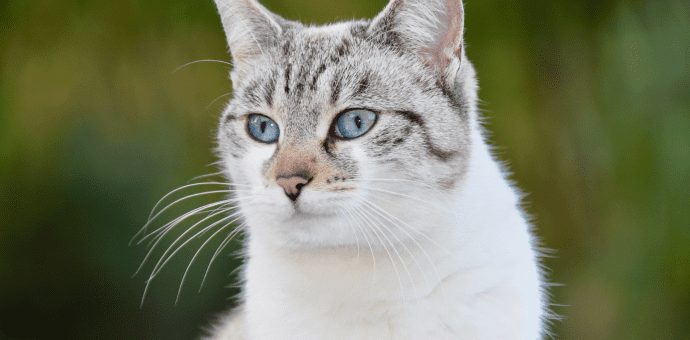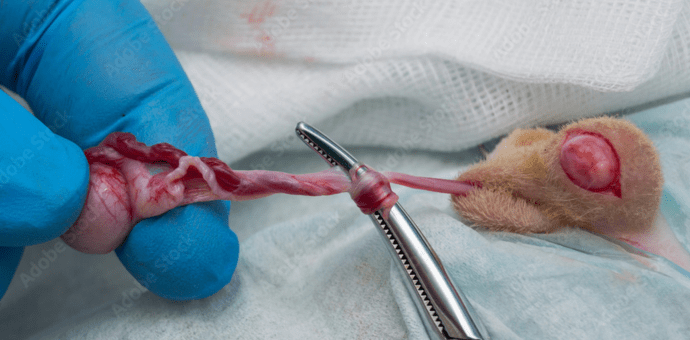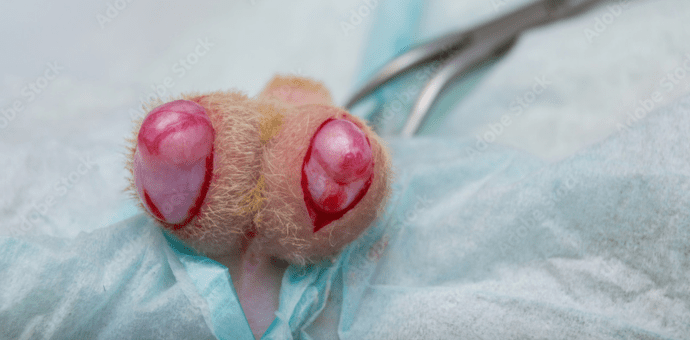As Team PetsPaa, we realise the significance of responsible pet ownership and try to give correct information on time to the pet owners. In this post, we will give you a complete picture of the male cat before and after neutering, from the meaning of neutering to the side effects of neutering.
Neutering or castration is a standard surgical procedure of testes removal from male cats to prevent them from reproducing. It offers various benefits and drawbacks. Join us as we delve into the details of the male cat before and after neutering, revealing the complete picture to help you make informed decisions for your feline companions.
Table of Contents

What does Spay and Neuter Mean
Spaying and neutering are surgical procedures that make it impossible for cats to reproduce. In spaying ovaries and uterus are removed from females, while neutering removes the testes from males. These methods offer advantages such as reducing the cat population, minimising diseases, and enhancing behavior.
Spaying and neutering are vital for controlling the cat population and avoiding unwanted litter. They also offer health advantages, including lowering the risk of reproductive organ disorders and testicular cancer. Furthermore, these treatments can help your cat’s behaviour by decreasing wandering, marking, hostility, and other mating-related behaviours.
Signs Your Cat Needs to be Neutered
As a responsible cat owner, you must know the Signs Your Cat Needs to be Neutered. Here, we are sharing a few signs:
- Roaming and fighting: Unneutered male cats are more likely to roam and fight with other cats. This behaviour can cause injuries and increase the incidence of diseases, viz. feline leukaemia and FIV (feline immunodeficiency virus).
- Unwanted mating behaviors: Intact male cats might display excessive vocalization, restlessness, and aggressive mating behaviors such as climbing furniture or people. Neutering can help lessen these habits and enhance your cat’s quality of life.
- Escaping to find a mate: If your male cat constantly tries to escape your home searching for a mate, it’s a sign that he may need to be neutered. Neutering can help reduce this urge to run and protect your cat from outdoor dangers.
- Marking territory: Unneutered male cats may spray urine to mark their territory, leaving a strong odour in your home. Neutering can often eliminate or reduce this behavior.

What is the Best Age to Neuter a Male Kitten
The ideal age to neuter a male kitten is typically between 4 to 6 months, considering the health and behavior benefits, recovery time, and consulting with your veterinarian for personalized advice. Neutering at the appropriate age can help ensure the well-being and happiness of your male kitten.
What Happens if You Neuter a Cat too Early
Neutering, or spaying/castration, is a standard procedure for cats to prevent unwanted litters and promote health. While neutering is typically done around 4-6 months of age, there is an ongoing debate about early neutering, done as early as 8 weeks.
However, Early neutering can have an effect on a cat’s development, temperament, and health. According to research, it may induce delayed bone growth, an increased risk of obesity, and behavioral abnormalities. A veterinarian consultation is required to make the best choice regarding the optimum time to neuter your cat based on their unique needs.
Neutered vs Unneutered Male Cat
Neutering male cats have various advantages, including reduced aggressive behavior, lower risk of particular health conditions, more lifespan, and optimized population control. Neutered male cats are calmer, more pleasant, and live longer lives than unneutered male cats.
However, the decision to neuter or not to fix your male cat is personal. It should be made in consultation with your veterinarian, considering your cat’s individual needs and circumstances.
Aspect | Neutered Male Cats | Unneutered Male Cats |
Reproduction | Testes are surgically removed, unable to reproduce | Testes are intact, capable of breeding |
Behavior | Calmer demeanor, less aggressive and territorial | More aggressive and territorial, prone to spraying and marking behaviors |
Health | Reduced risk of testicular cancer and urinary tract infections | Higher risk of testicular cancer and prostate problems |
Lifespan | Tend to live longer, healthier lives | Increased risk of accidents, injuries, and exposure to diseases |
Population Control | Do not contribute to stray cat overpopulation | May contribute to the overpopulation of stray cats |
Overall Quality of Life | More social and affectionate | Higher risk of injuries from fights and territorial disputes |
Roaming | Less likely to roam and exhibit mating behaviors | More likely to roam in search of a mate, leading to risks such as getting lost or hit by a vehicle |
Marking | Less likely to engage in territorial marking behaviors | More likely to spray and mark territory with urine, which can be problematic indoors |
Aggression | Reduced aggression toward other cats and humans | More prone to aggression towards other cats and potential risk of bites and scratches |
Hormonal Behavior | Less influenced by hormonal changes | Prone to mood swings and changes in behavior due to hormonal fluctuations |
Surgery Risks | Lower risks associated with surgical neutering | Risks associated with surgery, anesthesia, and recovery |
Cost | The initial cost of neutering, but potential savings in the long run | No upfront cost for neutering, but potential costs for health issues and behaviors associated with intact males |

Male Cat Before & After Neutering
Neutering has a marked impact on the behavior, health, and overall well-being of male cats. In this section, we shall examine the many features of the male cat before and after neutering.
Aspect | Male Cat Before Neutering | Male Cat After Neutering |
Behavior |
|
|
Health |
|
|
Population Control |
|
|
Marking and Odor |
|
|
Mating Behaviors |
|
|
General Behavior |
|
|
Urinary Issues |
|
|
Roaming and Escaping |
|
|
Socialization |
|
|
Hormonal Behaviors |
|
|
Weight Management |
|
|

Drawnback and Benefits of Neutering a Male Cat
Benefits of neutering a male cat | Drawnbacks of Neutering a Male Cat |
Population Control: Helps control stray and feral cat population. | Surgical Risks: Small risk of complications during surgery. |
Health Benefits: Eliminates risk of testicular cancer and reduces prostate problems. | Hormonal Changes: May affect behavior and increase risk of weight gain. |
Behavior Modification: Reduces spraying, marking, and territorial aggression. | Irreversible: Permanent procedure that prevents reproduction. |
Long-term Cost Savings: Saves on potential medical expenses and injuries. | Personal Beliefs: Some may have cultural or personal beliefs against neutering. |
Male Cat Neutering Side Effects
As a cat owner, you may have pondered or previously gone through the procedure of neutering your male cat. Neutering provides several advantages, including population control and the prevention of unexpected breeding. It is critical to be informed of any potential adverse effects that may occur following the surgery. Post-surgical discomforts like soreness, swelling, and tenderness in the surgical region are common adverse effects of male cat neutering.
- Neutering can also change urinary behavior, such as increased or decreased frequency and volume of urination. Changes in urine concentration were also noticed.
- Weight gain may occur after neutering owing to hormonal changes that influence metabolism and appetite, raising the risk of obesity and related health complications.
- Behavioral changes, such as increased docility or anxiety, can sometimes occur after neutering.
- Rare complications of male cat neutering can include infections, bleeding, or other surgical complications.
- It’s essential to closely monitor your cat’s health and behavior after neutering and consult your veterinarian if you have any concerns or questions.

Signs of Infection after Neutering Cat
As a responsible cat owner, Neutered a male cat to avoid unwanted litters and improve his health can be done. Keep a close eye on signs of infection after neutering cat, such as pain, swelling, and other infection symptoms in the surgical area.
- Increased swelling and redness around the incision site: While some swelling and redness are normal after surgery, it could indicate infection if it worsens over time.
- Abnormal discharge or pus from the incision site: Suppose you observe any abnormal discharge or pus from the incision site, such as yellow, green, or smelling bad. In that case, this might be a symptom of infection.
- Persistent pain or sensitivity at the surgical area: While mild discomfort is expected after surgery, if your cat seems to be experiencing ongoing pain that doesn’t improve, it could indicate an infection.
- Fever with elevated body temperature: If your cat’s body temperature is consistently above the normal range (between 100.5 and 102.5 degrees Fahrenheit). In that case, it may indicate an infection and requires immediate veterinary attention.
- Lethargy or loss of appetite: If your cat seems unusually tired, weak or has lost appetite after surgery, it could be a sign of an infection. Cats are typically resilient, so any significant changes in behavior or energy levels should be closely monitored.
Suppose you notice any of these signs in your cat after surgery. In that case, seeking prompt veterinary attention is essential to ensure proper diagnosis and treatment of a possible infection.
Conclusion
In conclusion, neutering, or castration, is a standard surgical procedure that offers various benefits for male cats. Neutered male cats tend to have reduced aggressive behaviors, decreased risk of specific health issues, increased lifespan, and better population control. They are also calmer, more social, and less likely to roam, mark territory, or exhibit mating behaviors.
Neutering male cats can improve their general quality of life and avoid unwanted litters. However, there is continuous disagreement regarding the best time to neuter, as early neutering can influence development, temperament, and health. At last, we suggest speaking with a nearby veterinarian and making an informed decision based on your cat’s specific requirements and circumstances.






